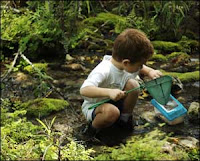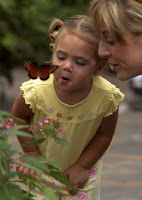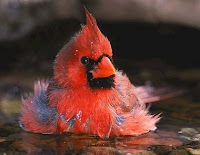 In the first days of spring, I’m thinking about kids. For me, growing up in postwar subdivision on the edge of a forest, spring meant time to head back out into the woods. But that’s an anomaly today, and there’s been a lot of attention paid to the state of childhood in postmodern America. Sadly, little of it is good.
In the first days of spring, I’m thinking about kids. For me, growing up in postwar subdivision on the edge of a forest, spring meant time to head back out into the woods. But that’s an anomaly today, and there’s been a lot of attention paid to the state of childhood in postmodern America. Sadly, little of it is good.Since we’re so busy making sure no child is left behind, our kids are over-tested, overstressed and over-programmed-- if this is Tuesday, it must be French lessons and a piano recital. Headlines pile up like snowdrifts noting increased rates of obesity, depression, asthma, autism, attention-deficit disorder, and worse; today’s parents have been nicknamed “helicopters” for how we hover around our children assisting them in every single decision they make.
Then there’s the whole technology piece: kids spend more time immersed in the iWorld of laptops, cable TV, IM, iPods, and more. The Kaiser Family Foundation noted that the average 10-year-old spends more than 45 hours a week—essentially a full-time job—consuming electronic media.
Visitation to national parks is declining. There’s been a 30 percent decrease in bicycle riding. Many schools have curtailed, even cut, free time, and school commitment to outdoor play has dwindled. The percentage of children who live within a mile of school and walk or bike there has declined nearly 25 percent in the past 30 years. In one survey, 71 percent of adults report that they walked or rode a bike to school when they were children, but only 22 percent of children do so today. Children predominantly play at home, with their activities monitored and controlled by adults; only 3 percent have a high degree of mobility and freedom in how and where the
 y play.
y play.From 1997 to 2003, there was a 50 percent decline in the proportion of children who spent time in such outside activities as hiking, walking, fishing, beach play, and gardening. Children’s free play declined more than seven hours a week from 1981 to 1997, and an additional two hours in the next decade—that’s a loss of nine hours a week over a 25-year period.
But a movement is slowly building momentum to combat these trends. Richard Louv, journalist and author of the much-discussed Last Child in the Woods, coined the phrase “nature-deficit disorder” to describe the growing disconnect between children and nature. And he’s been getting a lot of attention. A Children and Nature Network has been created to support his book’s work (www.cnaturenet.org), and disseminate research about this topic. Many states, including Pennsylvania, are considering No Child Left Inside legislation to encourage, even mandate outdoor education, the Forest Service launched a More Kids in the Woods initiative, and the Secretary of the Interior has challenged his national parks to reconnect children and nature.
It turns out that research is also revealing the importance of nature to children, and the restorative tonic that nature is. Kids who grow up immersed in nature have less issues with ADD and depression, and outdoor play reduces incidence of obesity, which is connected to heart disease and diabetes. “Children are smarter, more cooperative, happier and healthier when they have frequent and varied opportunities for free and unstructured play in the out-of-doors,” states the Children and Nature Network’s online research paper.
And check this out: students score higher on standardized tests when natural environments are integral to schools’ curricula. Leave no child behind? Fine. Get them outdoors.
In addition, studies indicate green plants and play yards reduce children’s stress. Free play in natural areas enhances children’s cognitive flexibility, problem-solving ability, creativity, self-esteem, even self-discipline. “Natural spaces and materials stimulate children’s limitless imaginations and serve as the medium of inventiveness and creativity,” says Robin Moore, an international authority on the design of environments for children’s play, learning, and education.
There’s even evidence that growing up in a neighborhood filled with trees leads to healthier, happier kids. Hospitals have long known that people recuperating in a room with a view of greenspace recover sooner, leave earlier, and return less frequently. In a British study, 71 percent of people with mental health disorders reported that taking a walk decreased their depression and tension. Wilderness therapy is catching on as new cure for mental illness.
The more we research the issue, the clearer the trend becomes: humans evolved in the natural world, and our growing disconnection to that world comes at the peril of both people and nature. We need this information now more than ever, as other lines of research continually indicate the extent of the decay within natural systems, with temperature and ocean levels rising, ice sheets melting, glaciers disappearing, rivers drying, deserts spreading, forests vanishing, coral reefs bleaching, and so on.
So get out! Grab the kids, head to a greenspace, put down a picnic blanket, and let the kids play. Let them get wet and muddy. Let them pull up a log and look for ants. Let them take time to smell the roses. Literally.
Just get out. There’s tonic in them there hills.





